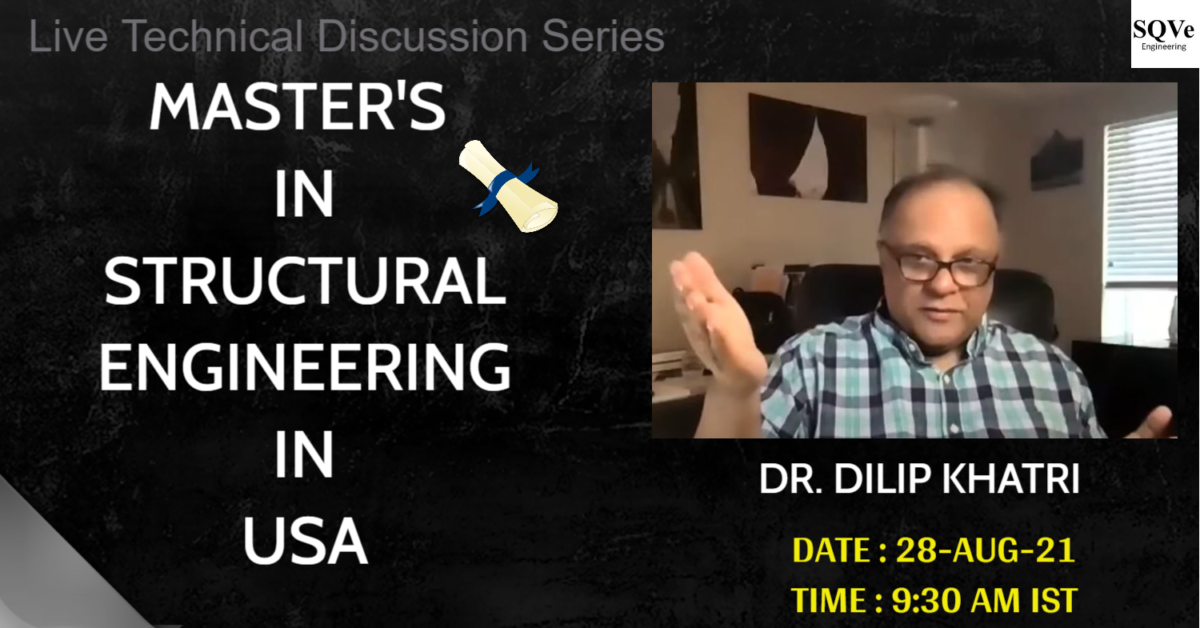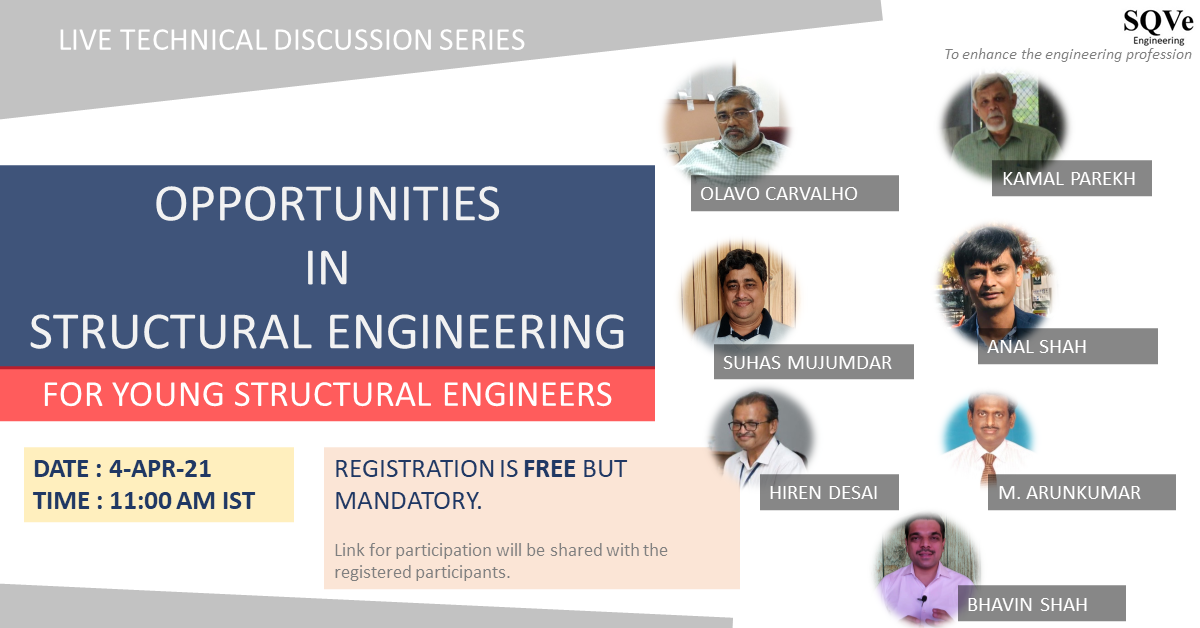Introduction
We are receiving many questions from Civil Engineers related to pursuing master’s in structural engineering in USA. The few questions are as follows:
- Which university may be considered for the study?
- What are the pros and cons of different institutes?
- What is the prospect after completing the Masters in USA?
- What should be my area of specialisation in structural engineering so that there are better chances of getting the job?
- Can I pursue Ph.D. in structural engineering after completion of post graduation in India?
- And many more…
In view of the above, the next live technical discussion is planned for helping out the prospects who are exploring further for pursuing Master’s in Structural Engineering in USA.
Brief about the Expert
Dilip Khatri, PhD, SE (Principal Structural & Civil Engr, Khatri Int. Inc.)
Dr. Khatri has over thirty-nine (39) years of civil engineering experience involving land development, subdivision, commercial, residential, multi-family, industrial, and educational facilities. Design, construction, and overall management of major infrastructure improvements comprising sewer, water, storm drain, flood control, and grading design. He also taught structural engineering for more than a decade in USA.
He has been working with Insurance Carriers over the past ten years involving various areas of casework :
- Forensic Structural Engineering,
- Structural Design/Engineering Reconstruction
- Construction Cost Estimating and Project Management
- Geotechnical and Soils Issues
- Earthquake/Seismic Evaluation of Existing Buildings and PML Reports
Facilitator
Bhavin Shah – Founder & CEO, SQVe Consultants
He is passionate about Engineering profession and has total experience of two decades in the different engineering organisations. He is having a dream for enhancing the engineering profession. He has conducted many technical sessions across the country for knowledge sharing. He is pursuing Ph.D. in Structural Engineering and his area of focus for research is to implement buckling restrained braces for earthquake resistant design of upcoming industrial structures as well as for retrofitting of the existing industrial structures.
Schedule of the event
DATE : 28-AUG-21
TIME : 9:30 AM IST
How to register for the event?
Registration is FREE. In the registration form, please mention your specific doubts/queries related to the master’s in structural engineering in USA. It would help us to structure the discussion.
Link for joining the meeting will be sent prior to couple of days of the event. Click below for registration:
For any queries/doubts, you may contact us at: contact@sqveconsultants.com
The session will be streamed live at YouTube, LinkedIn and Facebook simultaneously. The video of YouTube is embedded below. You may see the live stream either at YouTube or on this page.













